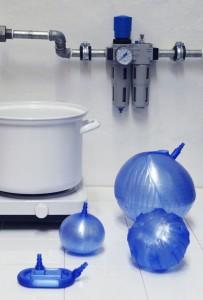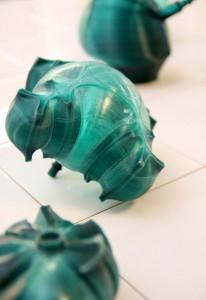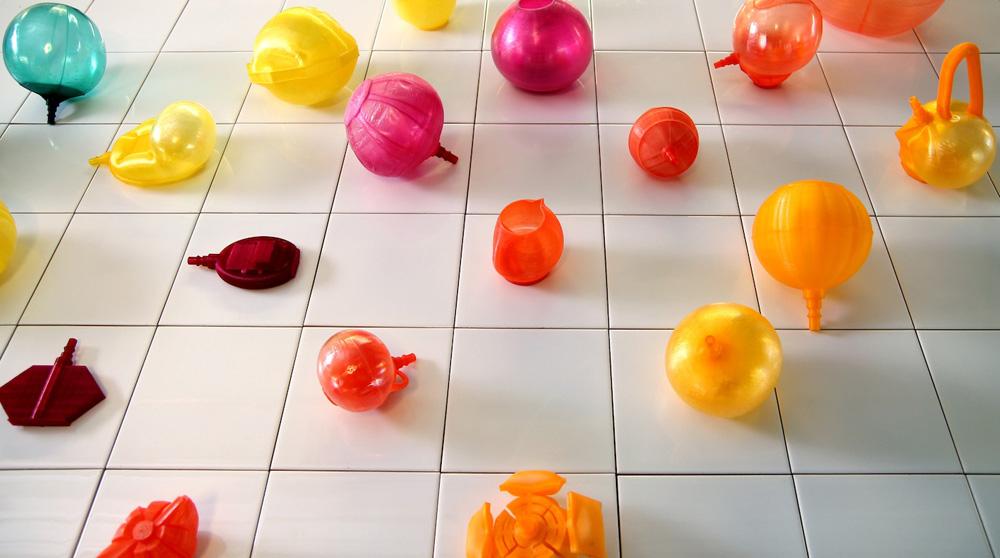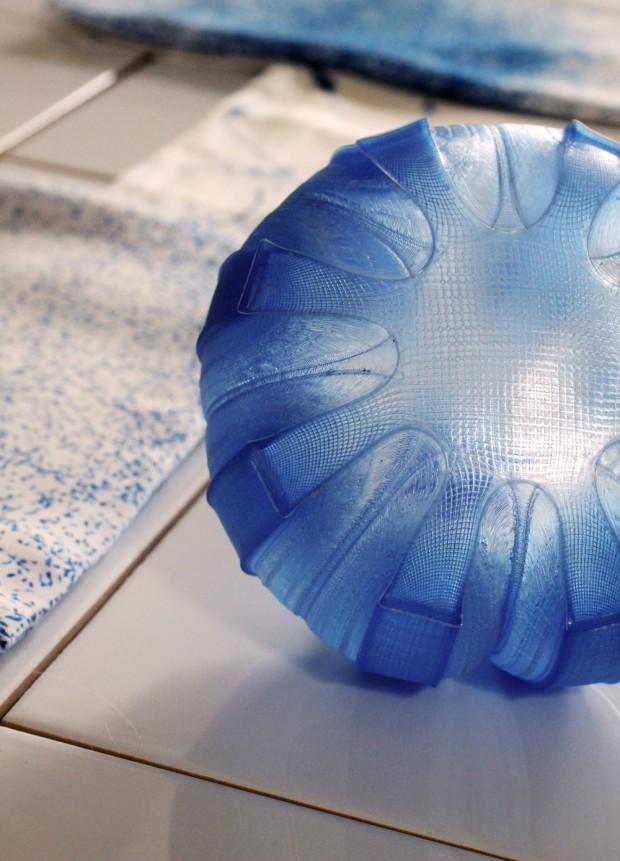Many people believe that there is a divide between science and art, but this false duality is belied by some of the greatest minds in history – from Aristotle, to da Vinci, to Einstein, to name just some of the heavyweights. There is no need to build a bridge between these two cultures of human thought as, rather than forming two objects in a binary system, they are instead located on a continuum that stretches the entirety of human knowing.
 Artist Roos Meerman practices at the heart of this continuum where materials science and aesthetics inform each other to create objects of startling beauty. Her project Aera Fabrica combines the potential of 3D printing with the process of glass blowing. The objects that she prints are modified after they have been created by using air to inflate them and temperature to control shaping, just as glass blowers have been doing for centuries but with a modern twist. Meerman described the explorations in her studio as, “giv[ing] space to knots in wood, shade of color in leather, bubbles in glass, and the collapse and contraction of porcelain to create unique materials and products.”
Artist Roos Meerman practices at the heart of this continuum where materials science and aesthetics inform each other to create objects of startling beauty. Her project Aera Fabrica combines the potential of 3D printing with the process of glass blowing. The objects that she prints are modified after they have been created by using air to inflate them and temperature to control shaping, just as glass blowers have been doing for centuries but with a modern twist. Meerman described the explorations in her studio as, “giv[ing] space to knots in wood, shade of color in leather, bubbles in glass, and the collapse and contraction of porcelain to create unique materials and products.”
The final form of the object is only constrained by the way in which the 3D print was designed. Rather than being a formless blog of molten glass for which solely the artist determines the possible outcome, in this case, the final form is created at the intersection of the artist’s guidance and the objects inputs. Meerman explained:
“For me, designing starts with experimenting with material: dipping, heating, melting, stretching, breaking, or freezing the material. I try to transform the tendencies and characteristics of the material and to provoke specific forms. I try to find interesting characteristics and the limits of the material by playing with it. My goal is to control the material but in such a way that it retains its freedom of movement, so the result is always unique.”
Meerman’s work continually explores the way in which mechanical data and traditional artistic production interact to create beauty. For her project Canorgraphy, for example, she created a machine that produced sound waves causing attached pens to vibrate and move over the surface. In this manner, elaborate patterns were created on textiles, one of the oldest forms of human production.
In all of her work, it is not possible to fully predict the final product based on the initial parameters. There is an element of surprise in each object and a near impossibility for exact replication. For Meerman, this is the ultimate exploration of the mechanics of natural production as even very similar circumstances can lead to minute variations within constraint. Each flower is slightly different than every other although based on the same set of instructions.
The 3D printed DNA for her objects Aera Fabrica imposes a set of constraints but also an avenue for metamorphosis and variation. Therefore, the pieces created do not lose the connection with the natural processes of the world simply because they have as their midwife, an advanced technology. Let’s hear your thoughts on this unique form of art in the Roos Meerman forum thread on 3DPB.com. Check out some of her amazing work below.
Subscribe to Our Email Newsletter
Stay up-to-date on all the latest news from the 3D printing industry and receive information and offers from third party vendors.
Print Services
Upload your 3D Models and get them printed quickly and efficiently.
You May Also Like
Havaianas Collaborates with Zellerfeld to Launch 3D Printed Flip-Flops
The shoe of the summer is undoubtedly the flip-flop. Easy on, easy off, your feet won’t get sweaty because there’s not much material, and they’re available in a veritable rainbow...
UCLA Researchers Develop 3D Printed Pen that May Help Detect Parkinson’s Disease
Diagnosing Parkinson’s disease is difficult. Often, early symptoms of the progressive neurological condition may be overlooked, or mistaken for signs of aging. Early diagnosis can help save lives and improve...
Printing Money Episode 30: Q1 2025 Public 3D Printing Earnings Review with Troy Jensen, Cantor Fitzgerald
Printing Money is back with Episode 30, and it’s that quarterly time, so we are happy and thankful to welcome back Troy Jensen (Managing Director, Cantor Fitzgerald) to review the...
Heating Up: 3D Systems’ Scott Green Discusses 3D Printing’s Potential in the Data Center Industry
The relentless rise of NVIDIA, the steadily increasing pledges of major private and public investments in national infrastructure projects around the world, and the general cultural obsession with AI have...


































